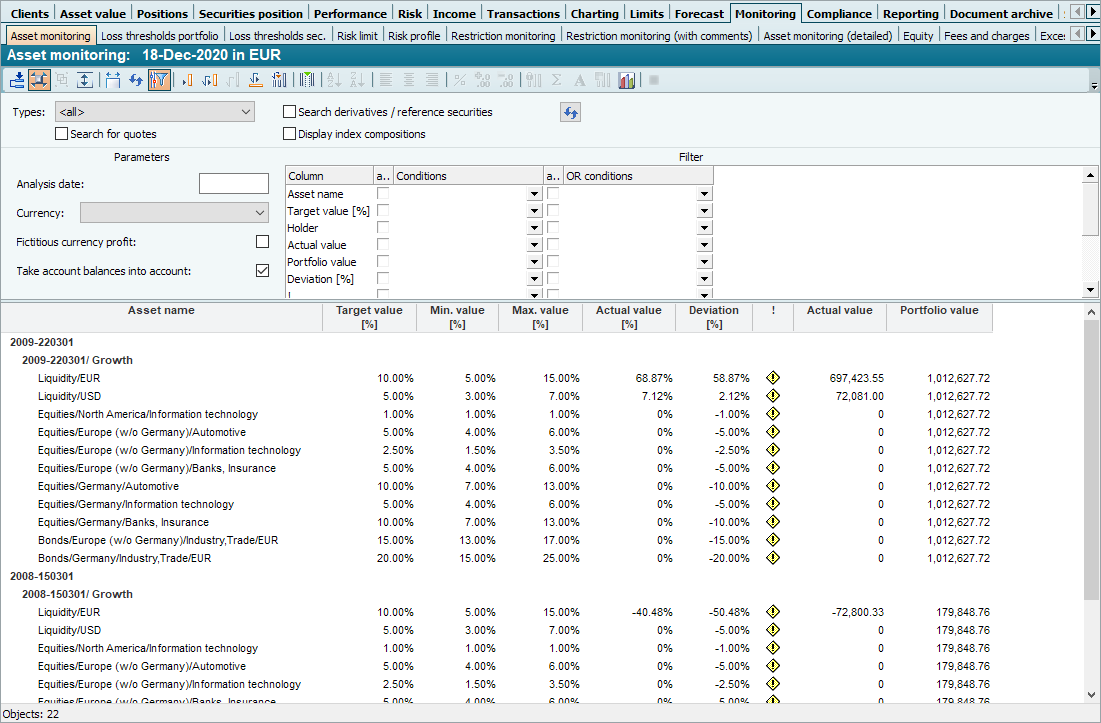Asset monitoring
Module "Portfolio Service Extended Portfolio Analysis"
Asset monitoring" allows you to monitor compliance with the asset allocation assigned to the holders, portfolios or custody accounts. The tabular evaluation groups the current portfolio according to the basic asset class combinations of the assigned model.
You can find this evaluation in the workspace of groups, portfolios, holders or securities accounts on the "Monitoring" worksheet (as delivered).

The "Asset monitoring" columns in detail:
| Column | Description |
|---|---|
Portfolio name | Name of the portfolio and name of the asset allocation. The table is grouped according to this column on the second level. |
Asset designation | Name of the respective underlying asset class combination according to the asset allocation stored. |
Holder | Name of the owner. The table is grouped according to this column at the first level. |
Target value [%] | For each basic asset class combination, you will see the desired investment level in the form of a percentage target value. |
Min. value [%] | Here you can see the percentage lower tolerance value granted according to the asset allocation for each basic asset class combination. |
Max. Value [%] | Here you can see the percentage upper tolerance value granted by the asset allocation for each basic asset class combination. |
Actual value [%] | Here you can see the actual percentage value of the basic asset class combinations. |
Deviation [%] | Here you can see the percentage deviation of the actual value from the target value. |
! | A warning sign is displayed in this table column if the deviation exceeds the permissible tolerance range. There is therefore a need for action here, as the investment strategy is no longer fulfilled by the current market prices. |
Actual value | Here you can see the current actual value of the basic asset class combinations. |
Portfolio value | Total value of the portfolio. Depending on the portfolio type, this refers to the holder, a securities account or a portfolio. |
Please also read the chapter Asset allocation.
In addition to asset monitoring, there is a more detailed variant that allows a more detailed view of the positions assigned to the basic asset class combinations. See the description in the chapter Detailed asset monitoring.
Siehe auch:
